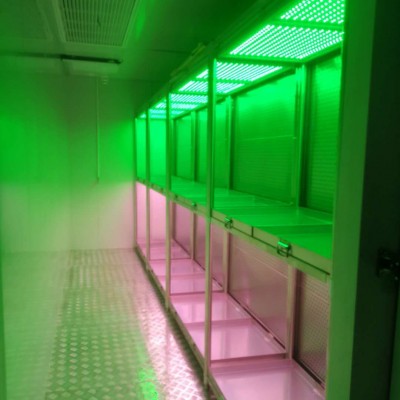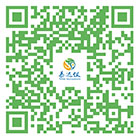Design of plant supplementary light regulation system based on STM32
Abstract: Light is one of the important environmental factors for plant growth and development. In the process of plant tissue culture, in order to better utilize LED light sources to supplement light for plants in the tissue culture room, save energy and improve supplement light efficiency, a plant supplement light control system based on STM32 was designed; The system uses STM32 as the microcontroller to design the plant supplementary lighting control center and supplementary lighting regulation node circuit. The supplementary lighting control center communicates instructions and data with multiple supplementary lighting regulation nodes installed in the tissue culture room through RS485 communication modules. The supplementary lighting regulation nodes coordinate the various circuit modules of the supplementary lighting regulation nodes to work together according to the task instructions and supplementary lighting parameters of the supplementary lighting control center, achieving timely and quantitative supplementary lighting of plants in the tissue culture room; The experimental test results show that the system is environmentally friendly, easy to operate, and has stable and reliable performance. It can achieve supplementary lighting while saving energy, thereby reducing the cost of seedling cultivation in the tissue culture room. This provides a reference for achieving supplementary lighting of plants in plant tissue culture rooms.
Basic information of the paper
Title: Design of Plant Supplemental Light Control System Based on STM32
Journal: Computer Measurement and Control, Volume 29, Issue 2, 2021
Authors: Yi Yi, Dou Wenmiao (School of Information Technology, Guilin University of Electronic Science and Technology); Mo Yanlan, Yuan Songyue (Guilin Yiyuansheng Modern Biotechnology Co., Ltd.)
Research background and issues
Core issue: In plant tissue culture, light is a key factor affecting growth, but traditional supplementary lighting methods suffer from energy waste and low efficiency.
Goal: Design an intelligent supplementary lighting system to achieve precise control of lighting while reducing energy consumption and seedling costs.
Technical solution and implementation
Hardware Architecture
Main control chip: STM32 microcontroller (high-performance, low-power, suitable for embedded control).
System composition:
Central Control Center: Responsible for task scheduling and parameter distribution.
Supplement light control node: deployed in the tissue culture room, receiving instructions and controlling LED light sources.
Communication method: RS485 bus (strong anti-interference, suitable for multi node long-distance communication).
functional design
Closed loop control technology: dynamically adjust LED brightness based on real-time lighting feedback to avoid excessive fill light.
Energy saving strategy: Timely and quantitative supplementary lighting as needed to reduce ineffective energy consumption.
Multi node collaboration: supports unified management of multiple control nodes to meet the needs of large-scale tissue culture rooms.
Experimental results and advantages
Test results:
The system runs stably and reliably, with high precision in supplementary lighting (executed accurately according to set parameters).
Significantly reduce energy consumption and lower the cost of seedling cultivation in tissue culture rooms.
Core advantages:
Environmental protection and energy conservation: Optimize the efficiency of light energy utilization and reduce electricity waste.
Easy to operate: The interface of the main control center is user-friendly and the parameter configuration is simple.
Scalability: Modular design allows for flexible addition and removal of control nodes.
Teda Instrument has its own core technology and develops specialized light sources for plant growth, ranging from 400-700nm red and blue light. To meet the requirements of different plant growth and special light treatment experiments, monochromatic, two-color, tricolor, and multi-color light sources are equipped for combined application. The lifespan of TEDA lighting fixtures is up to 50000 hours, with uniform and stable light quality, widely used for various purposes such as light treatment on plant stress physiology, photosynthetic mechanisms, adverse environmental experimental lighting, animal culture research, etc.
3-color spectral flat plate type: including B (450nm ± 5nm), R (660nm ± 5nm), IR (730nm ± 5nm); The intensity of each light source can be independently and continuously adjusted from 0 to 100% through the touch screen; https://www.tedayi.cn/detail-17-34-c.html
Four color flat plate type: The spectrum includes B (450nm ± 5nm), R (660nm ± 5nm), IR (730nm ± 5nm), W (full spectrum 400-700nm) https://www.tedayi.cn/detail-17-37-c.html
Welcome to call for consultation!







